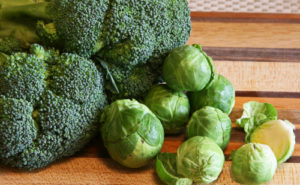You are out hiking and twist your ankle. It hurts, but you make it back to your car without much problem. You notice you have some swelling and it is sore, so you head home for some good, old fashioned R.I.C.E. (rest, ice, compression, elevation). You pass it off, saying, “Oh, it’s just a sprain.” However, when your doctor checks you out the next day, he tells you that it is “strained.” Sprain vs strain, what’s the difference?
While many people use the two terms interchangeably, they are not the same. There are some distinct differences although many of the symptoms are almost identical. In short, when a ligament is injured it is called a sprain. When a muscle or tendon is injured, it is called a strain.
What Exactly are Sprains and Strains?
Ligaments are tough bands of tissue that connect two bones as they sit in a joint. For example, the tibia and fibula come together to fit in the ankle joint. Tendons join those two bones together to keep the ankle stable. A joint sprain occurs when these ligaments are torn or overstretched. The ankle is the most commonly sprained joint.
Tendons are cords of tissue made up of a dense network of fibers. They connect the muscle to the bone. A joint strain occurs then the tendons or muscles tear or overstretch. The lower back and hamstrings are the most common areas for muscle strain.
Both injuries are very similar so it stands to reason that the symptoms of the injuries are also almost identical. This is why they are so commonly confused.
Symptoms of Sprains vs Strains
The symptoms for each condition is very similar, but there are some differences.
Symptoms of sprains include:
- Pain around the area that is affected
- Bruising in the affected area
- Swelling in the immediate area but can expand to encompass more area
- Limited range of motion
- Decreased flexibility
Symptoms of strains include:
- Pain at the site of the joint that is affected
- Muscle spasm
- Swelling in the immediate area but can expand to encompass more area
- Limited range of motion
- Decreased flexibility
As you can see, the symptoms of sprains and strains are very close. The primary differences though are that bruising may occur with a sprain while a strain may elicit muscle spasms in the muscle that is affected.
What Causes Sprains and Strains?
Experiencing a sprain or strain every once in a while, is not out of the ordinary. We put our bodies through a lot in a day. However, there are certain activities that can make you more susceptible to movements that can lead to these injuries. They include:
- Exercise or athletic activities, especially those that are high impact
- Walking
- Repetitive motion for a long period of time
- Overexertion
- Jogging or running
- Slipping or falling
- Standing or sitting in an unnatural or awkward position
- Walking or running on unstable surfaces, like rocks or ice
- Lifting objects that are too heavy
The most common areas for these injuries include:
- Back
- Ankle
- Wrist
- Knee
- Thumb
How to Avoid Sprains and Strains
Sometimes injuries just happen and there’s nothing you can do about it. However, in most cases, you can take proactive steps to minimize your risks. These are some of the most common risk factors:
- Being in poor physical condition
- Using proper form when exercising
- Failing to warm up before activities like exercising
- Not using the right equipment for your workout or sporting activity.
- Maintaining a hazardous environment at home such as clutter on the floor or things you can trip over or slip on.
- Fatigue or overly tired
- Failure to avoid hazardous areas like floors that are wet and slippery or sidewalks that are iced over and slick.
If you have a sprain or strain and notice that the swelling has not subsided or if you still have pain after a week or so, you need to follow up with your doctor for Sports Medicine Care and to make sure you don’t have a more serious injury.




